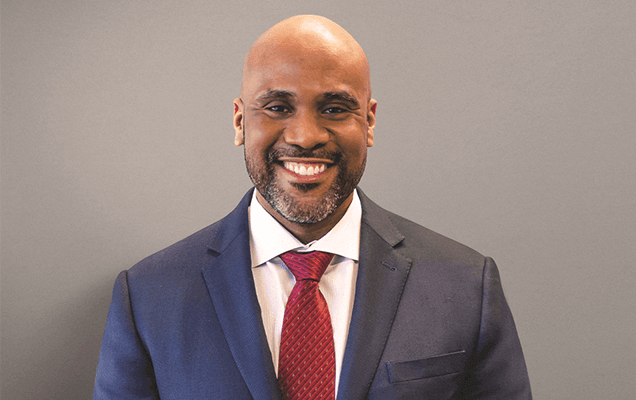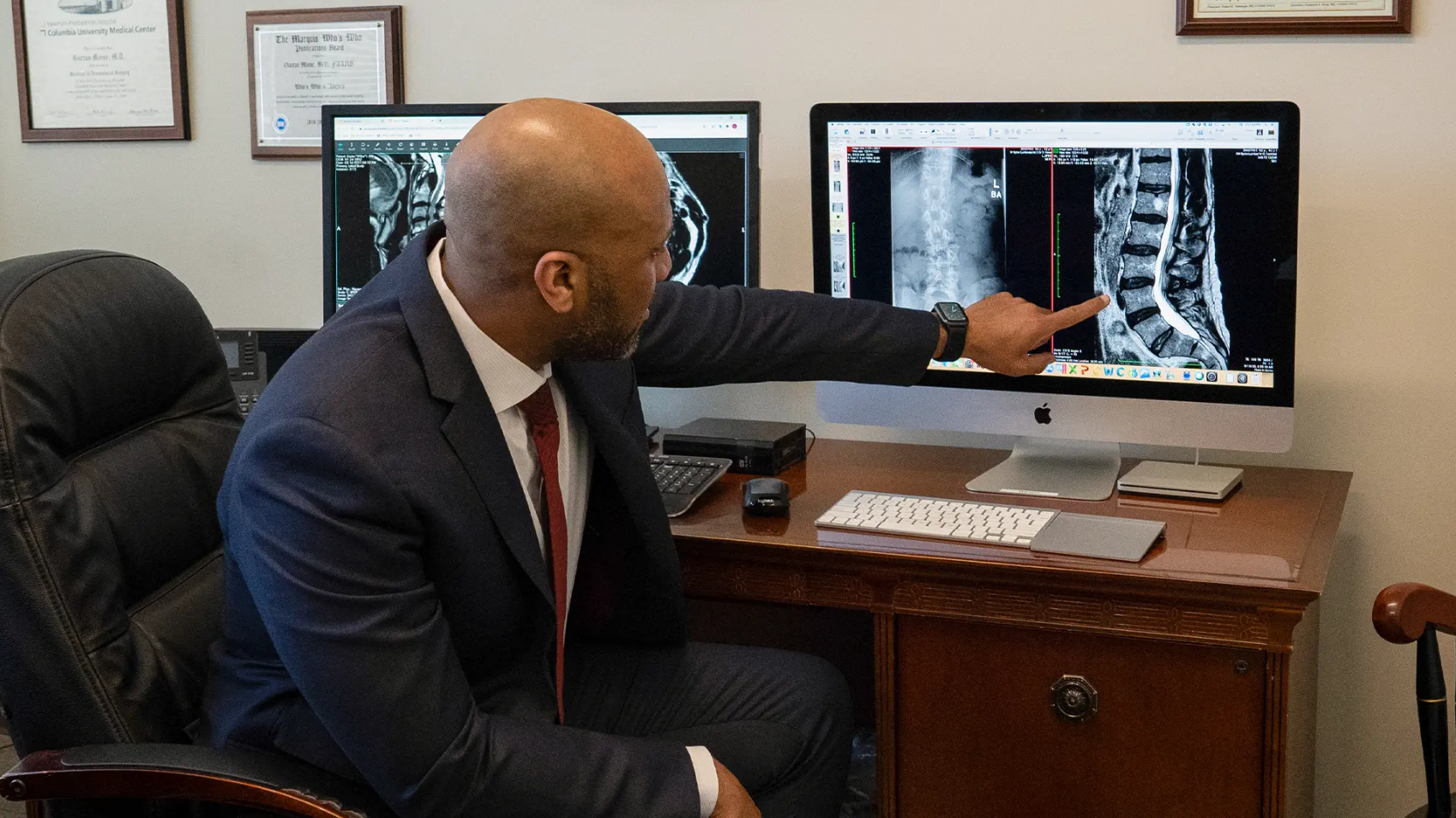Minimally Invasive Lumbar Spinal Stenosis Surgery
To understand this condition, it is also important to understand the anatomy of the lumbar spine.
The lower back, known as the lumbar spine, is composed of five vertebrae. These vertebrae are in the lower section of the spine, between the ribs and the pelvis.
Lumbar spinal stenosis is a condition characterized by the narrowing of the spinal canal in the lower back, which can lead to compression of the spinal cord and nerves. When conservative treatments fail to provide relief, surgery may be recommended to alleviate symptoms and improve quality of life.
What Causes Lumbar Spinal Stenosis?
Common causes of spinal stenosis include aging, bone spurs, overgrowth of facet joints, ligament thickening, or cyst formation. Symptoms may be caused by inflammation or compression of the nerves.
Symptoms of lumbar spinal stenosis may include:
-
- Pain in the lower back
- Leg pain
- Burning pain going into the buttocks and down into the legs (sciatica)
- Numbness, tingling, cramping, or weakness in the legs.
- Loss of sensation in the feet
- Foot drop
Diagnosing Lumbar Spinal Stenosis
Your doctor will ask about your symptoms and medical history and perform an exam. You also may need imaging tests to help diagnose the issue. These tests help identify the location and severity of the stenosis.
Types of imaging used may include:
MRI- (magnetic resonance imaging) uses magnets to provide detailed images of the spinal canal and nerve roots.
CT scans (computed tomography) use x-ray technology at different angles. This can be used to identify bone spurs or other problems that contribute to spinal stenosis.
Non-surgical treatment for spinal stenosis
Non-Surgical Treatment Options are usually the first approach in managing lumbar spinal stenosis. These may include physical therapy, medications such as non-steroidal anti-inflammatories, or muscle relaxers.
Epidural steroid injections may also be used. Corticosteroids injected into the epidural space can help reduce inflammation and provide temporary pain relief.
Physical therapy is an important part of the treatment plan for lumbar spinal stenosis. Physical therapists provide personalized exercise programs and guidance to help patients regain strength, mobility, and posture.
When symptoms are mild, spinal stenosis can safely be treated with conservative measures for years. Severe symptoms that do not respond to conservative treatments are treatable with surgical intervention.
It's time to get back
to doing what you love.
Surgery for Spinal Stenosis
Surgical treatment for lumbar spinal stenosis relieves pressure on the nerves by removing the sources of compression. Surgeons create more space within the spinal canal, decreasing the pressure on nerve roots which relieves pain and other symptoms. Surgery can improve quality of life and restore the patient’s ability to perform daily activities
There are several types of surgeries used to treat lumbar spinal stenosis. Common surgical treatments for lumbar spinal stenosis include:
- Laminectomy
- Laminotomy
- Foraminotomy
- Interspinous device insertion
- Spinal Fusion
How are the different surgeries performed?
Laminectomy involves removal of the lamina, or back portion of the spinal canal, creating additional room for the nerves. Laminotomy and foraminotomy surgeries create small openings in the spine while preserving important structural elements. This may prevent further degeneration of the spine because of surgery itself.
Fusion and interspinous device insertion can help correct problems with alignment of the lower back. It also helps with instability in the lumbar spine that contributes to the narrowing of the canal. With advances in technology, many of these spine surgeries can be performed using minimally invasive techniques.
Minimally invasive surgery options are available. These procedures provide symptom relief and have shorter operating room times. Additionally, they cause less blood loss, smaller incisions, less scarring, and require less pain medication while offering shorter recovery times.
Benefits of lumbar spinal surgery
Lumbar spinal stenosis surgery can provide significant relief for individuals suffering from painful symptoms associated with spinal canal narrowing. Deciding to have surgery for spinal stenosis is complex. It should be done in consultation with a qualified healthcare professional, such as a neurosurgeon or orthopedic surgeon. Lumbar spinal stenosis surgery can create additional room in the spinal canal for pinched nerves and relieve problems caused by stenosis.
Risks of lumbar spinal surgery
As with any surgical procedure, lumbar spinal stenosis surgery carries some risks and potential complications. These may include infection, bleeding, nerve damage, blood clots, or adverse reactions to anesthesia.
The benefits of surgery usually outweigh the risks and complications are rare. This is especially true in cases where conservative treatments have not been successful.
Recovery from lumbar spinal stenosis surgery
Recovery from surgery can take time. Most patients can expect to return to light activity 4-6 weeks after surgery. Full recovery can take several months, and physical therapy can help to promote healing and improve mobility.
To ensure a successful recovery, proper post-operative care, rehabilitation, and guidance from healthcare providers is necessary. With this support, patients can regain their mobility and improve their quality of life.
Your doctor will inform you when it is safe to resume regular activities, such as driving. They will also advise when it is safe to return to work. It is important to follow these guidelines to help your spine heal properly.
Is Lumbar Spinal Fusion Surgery Right for Me?
Surgery is an effective treatment for conditions like spinal stenosis, herniated discs, and degenerative disc disease.
Many people who undergo surgery for lumbar spinal stenosis report a return to normal activity levels and improved physical functioning. This allows them to perform daily tasks and have an improved quality of life free of pain.
There is no need to suffer with the pain of lumbar spinal stenosis. Contact our office today to schedule a consultation with one of our board-certified surgeons.

About Dr. Gaetan Moise
Dr. Gaetan Moise is an accomplished neurosurgeon in North Jersey and is a proud member of Neurosurgeons of New Jersey, practicing out of their Ridgewood office conveniently located on East Ridgewood Avenue. His compassionate evidence-based, results-driven approach is guided by his desire to help patients achieve happy, pain-free lives through non-surgical and appropriate surgical solutions. Dr. Moise’s techniques are influenced by the advancements in minimally invasive surgery technology as well as advances in the understanding of the intricacies of the nervous system, brain, and spinal cord. Dr. Moise is a member of The Congress of Neurological Surgeons and the American Association of Neurological Surgeons. He is accepting new patients.
Recent Posts:






